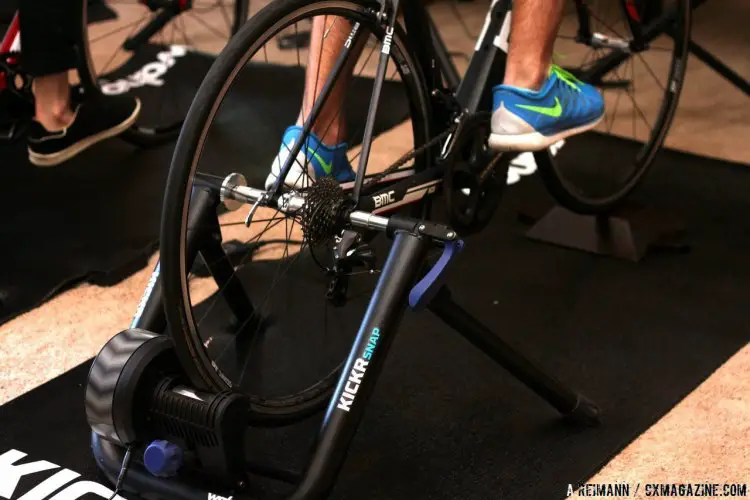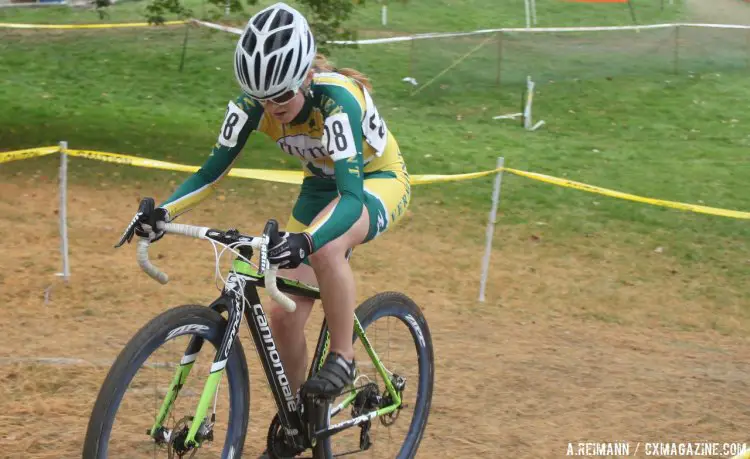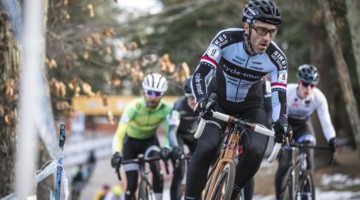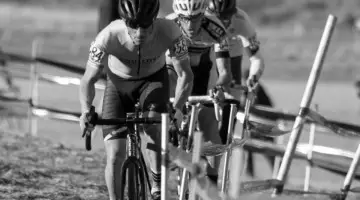 Most intervals can be ridden on or off the trainer. © A. Reimann / Cyclocross Magazine
Most intervals can be ridden on or off the trainer. © A. Reimann / Cyclocross Magazine
In an earlier post, Adam Myerson laid out the perfect training week for cyclocross. Some of us, however, want to know the nitty-gritty details of why we are putting in the training work we do, while others like to craft their own game plans. In today’s Technique Tuesday, Adam Myerson explains the reasons and work of all the different kinds of intervals vital for cyclocross, and when they are most appropriate to use to prepare for big events.
You can find other training ideas and articles at cycle-smart.com, as well as information on internationally-recognized coaching and clinic programs for all skill levels.
by Adam Myerson
Cyclocross is hard, plain and simple. There are very few sports that require the same level of intensity from start to finish over the course of an hour as a cyclocross event, where you're trying to perform at maximum output for the entire duration, combined with technique that requires a high level of skill and responding to unpredictable scenarios, while still also thinking critically and making tactical decisions, too.
Some might argue that like cyclocross, a 40K time trial also lasts about an hour, and requires the maximum effort possible over that time. This is true, in terms of generally defining the effort as "as hard as you can go for an hour." What's different about cyclocross, on top of the fact that it's a cold, muddy, and slippery version of the 40K time trial, is that the power requirements are different. The way you spread that "maximum effort" out over the course of the hour varies dramatically from a standard time trial. If you were to look at a graph of power and heart rate for a flat 40K time trial, you'd see two very steady, even lines. And so your training for time trials would reflect just that; a lot of steady-state intervals of various lengths, consistent in terms of both heart rate and power.
When you look at a power and heart rate graph of a cyclocross race, however, what you see is strikingly different. The heart rate line will look similar to the 40K TT: pegged and steady for the entire hour. The power is where the difference lies. The maximum effort you produce for a cyclocross race is one of sharply varying power, showing the effect of varying terrain. Cyclocross is a sport of transitions and speed changes. Full on the brakes here for this corner, full acceleration out of the corner. Foot out and sliding across an off-camber hill here, sprinting up over the other side there. Coasting a bit before the hurdles, followed by a max effort run, remount, and re-acceleration immediately after. Whereas average power for a 40K TT will see you actually riding at that average power during the event, power in a ’cross race will consist of continual large fluctuations above and below functional threshold power, even though both efforts will keep you at a heart rate response at threshold for the duration of the event. This is the key difference, and in this way cyclocross resembles a full-gas one-hour criterium more than it does a 40K time trial.
What's different, then, in interval training for cyclocross, compared to what you might do for the road or mountain bike season? First and foremost, the base period, if you're focused on ’cross, is the same. You should be maximizing the hours you have available and build the biggest workload of work below threshold you can in June, July and perhaps also August, depending on when you want to be at your best, in order to draw from that investment throughout the season. Of course, many people are struggling to get in the time to be fit for anything more than 1 hour race in the first place, summer or fall, so I often the volume of training for ’cross and road is the same. But you have the benefit of longer days and better weather in the summer, so it turns out to be much easier to do a big summer base for ’cross than it is to do a winter base for the road.
Just as you would after a winter base for the road season, once that base is complete and you're within a month of either the start of the season, or your first important races, you want to focus on higher intensity, supra-threshold interval work. Base is still important to ’cross, because you need a certain level of form to be able to recover from the stress of your interval training and racing, but once the racing starts, endurance in and of itself is not a priority. But when you plan your interval work for ’cross, you want to think in the same terms as you do in the summer, and define your work in categories of intensity, duration, frequency, and terrain or mode of work. I'll outline all the options in those parameters here.
Use the slider below to see all of Adam Myerson's interval guides.





























